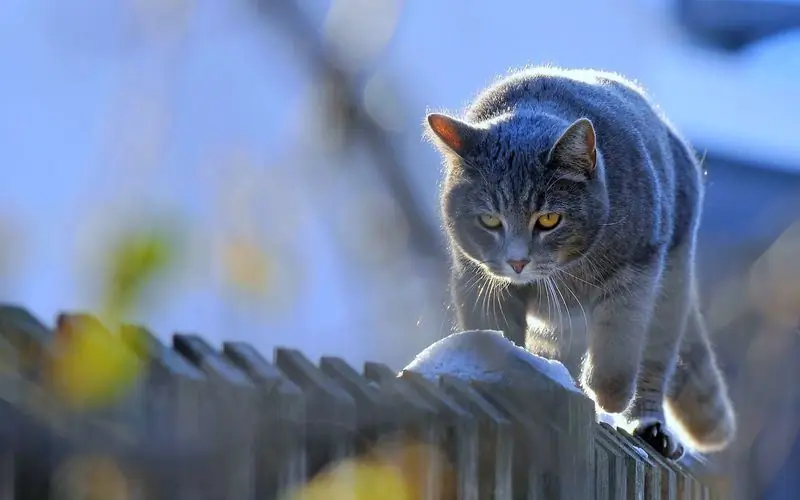
Table of contents:
- Feline viral immunodeficiency: diagnosis, not judgment
- Feline immunodeficiency virus
- Ways of infection and risk groups
- How does viral immunodeficiency manifest in cats?
- Diagnosis of viral immunodeficiency in cats
- Treatment of viral immunodeficiency
- Disease prognosis
- Preventive measures
- Veterinarian recommendations
- Author Bailey Albertson [email protected].
- Public 2024-01-17 22:26.
- Last modified 2025-06-01 07:32.
Feline viral immunodeficiency: diagnosis, not judgment

Viral immunodeficiency is a diagnosis in which worry for a pet will cover even the most cold-blooded owner. At the same time, if you treat your pet correctly and take good care of it, many more years of a happy life together await you.
Content
-
1 Feline immunodeficiency virus
- 1.1 Difference from Leukemia Virus
- 1.2 The main causes of the development of the disease
- 1.3 Danger to humans and other domestic animals
-
2 Ways of infection and risk groups
2.1 Factors contributing to the development of the disease
-
3 How does viral immunodeficiency manifest in cats
- 3.1 The incubation period and the first signs of the disease
- 3.2 Latent period
-
3.3 The main symptoms of immunodeficiency
3.3.1 Photo gallery: clinical manifestations of viral immunodeficiency in cats
- 3.4 When a doctor is urgently needed
- 3.5 Video: Feline Immunodeficiency Virus
- 4 Diagnosis of viral immunodeficiency in cats
-
5 Treatment of viral immunodeficiency
- 5.1 First aid for a pet
-
5.2 Medicines used
- 5.2.1 Antivirals
- 5.2.2 Means of symptomatic therapy
- 5.2.3 Immunomodulators
- 5.2.4 Table: Overview of Medicines Used to Treat Viral Immunodeficient Cats
- 5.2.5 Photo gallery: medicines for the treatment of viral immunodeficiency:
- 5.3 Caring for a sick cat
- 5.4 Treatment of pregnant cats and kittens
- 6 Prognosis of the disease
- 7 Preventive measures
- 8 Recommendations of veterinarians
Feline immunodeficiency virus
Feline immunodeficiency virus belongs to the family of retroviruses, a genus of lentiviruses and has a striking resemblance to the human immunodeficiency virus. In veterinary reference books, there are abbreviated names of this infection:
- FIV (Feline immunodeficiency virus);
- VIC.
Large wild cats such as lions, leopards, cougars and Pallas' cat are also susceptible to infection.
As in humans, feline viral immunodeficiency is a chronic disease with damage to the immune system, with a long period of latent (latent) course. The virus is unstable in the external environment and does not tolerate direct sunlight and drying; easily destroyed by all known antiseptics, even soapy water.
Difference from Leukemia Virus
Feline immunodeficiency virus is often confused with the causative agent of viral leukemia because both are:
- are RNA-containing retroviruses - they contain the enzyme revertase, which, when the virus enters the cell, on the basis of its RNA creates its DNA copy, which is integrated into the DNA of the host cell;
- affect the immune system, therefore they do not have specific clinical manifestations;
- cause diseases related to fatal infections of cats, as their treatment is not yet well developed.
Differences between the causative agents of viral immunodeficiency and viral leukemia:
- The immunodeficiency virus is highly variable, which makes it difficult to develop preventive vaccines. Vaccine prophylaxis exists in the USA, Australia; vaccinations in Europe and other countries are not yet available. In contrast, the causative agent of viral leukemia is genetically more homogeneous, and therefore vaccination against it is carried out everywhere.
- The leukemia virus attacks the bone marrow, and the immunodeficiency virus infects the mature cells of the immune system, so viral leukemia is more aggressive.
- For viral leukemia, the development of malignant tumors in young animals is characteristic; with viral immunodeficiency, tumors are formed much less frequently than in older pets.
The main causes of the development of the disease
The disease develops after infection with a pathogenic virus, the reservoir of which is infected cats. The virus is found in the blood, saliva, milk and other biological fluids of a sick animal.
Danger to humans and other pets
Feline immunodeficiency virus is highly specific and is only a concern for cats. People, dogs and other pets are immune to it.
Ways of infection and risk groups
The following routes of infection are distinguished:
- parenteral - through bites received in fights, has the greatest epidemiological significance;
- vertical - infection of kittens from an infected cat;
- sexual;
- iatrogenic - when transfused with infected blood.
The possibility of infection through bowls, brushes and other care items is considered negligible.

The main route of infection with viral immunodeficiency is through bites received in fights
At-risk groups:
- free-range cats and stray animals;
- belonging to the male sex - cats get sick 2-3 times more often than cats, which is explained by their more aggressive behavior;
- age over 5 years - the maximum degree of infection is determined precisely in such pets;
- cats with signs of other diseases - in this case, the risk of detecting the immunodeficiency virus is higher than in clinically healthy pets (according to foreign researchers, the virus was detected in 9-15% of cats with clinical signs of impaired immune status, and in 1.5-3 % of clinically healthy animals).
Factors contributing to the development of the disease
For the development of a detailed clinical picture of the disease, one infection is not enough. The immune system of the pet, due to a partially effective response, is able to limit the multiplication of the virus, which gives the cat the opportunity to lead a habitual way of life. Under the influence of factors that weaken the immune system, its control decreases, the virus multiplies and the development of the disease. Factors contributing to the development of the disease include:
- concomitant chronic diseases;
- infectious diseases, especially the herpes virus;
- imbalance in the diet;
- external and internal parasites;
-
stress.

The cat got scared Stress is one of the factors contributing to the transition of latent infection to disease
Also of great importance is the danger of a particular virus strain for this particular animal. In experiments, it was found that kittens with colostral antibodies to feline immunodeficiency virus transmitted from an infected mother, nevertheless, could not withstand the highly dangerous viral strains of the pathogen.
How does viral immunodeficiency manifest in cats?
Most of the symptoms of viral immunodeficiency are not directly related to the virus.
The incubation period and the first signs of the disease
The incubation period after infection is usually 1-1.5 months. The first signs of the disease can have varying degrees of severity, including going unnoticed. As a rule, they are cyclical and occur in the first few weeks or months after infection. These include:
- fever - can be either high or moderate;
- lethargy;
- lymphadenopathy - an increase in lymph nodes belonging to different groups;
- neutropenia - in the general blood test, attention is drawn to a periodic decrease in the number of segmented leukocytes - neutrophils.
During this period, the virus multiplies in the lymphoid tissue and salivary glands, and it can also be found in the blood, especially at 9-12 weeks after infection. The virus infects lymphocytes, monocytes, macrophages. There are neurotropic strains of the virus that infect the cells of the central nervous system, which leads to the appearance of neurological symptoms.
Latency period
After infection, a cat may not have symptoms associated with the infection for months or years. This is because the virus is in the form of DNA integrated into the cat's genome and does not multiply. This is due to the strong immunity of the animal, and in some cases the asymptomatic period continues in infected pets for their entire life. Having no signs of illness, animals in the latency period pose a danger to other cats.
If the virus manages to slip out of the surveillance of the immune system, it begins to multiply, causing damage to cells that are sensitive to it, and a clinical picture of viral immunodeficiency develops.
The main symptoms of immunodeficiency
Against the background of fever and generalized lymphadenopathy (enlargement of the lymph nodes of different groups), there are:
-
bacterial infections caused by the activation of the secondary flora (they are the most common symptoms of viral immunodeficiency), damage occurs:
-
respiratory organs:
- rhinitis;
- tracheobronchitis;
-
digestive system:
- stomatitis;
- gingivitis;
- chronic diarrhea;
- loss of body weight;
- lack of appetite;
- urinary system (urinary tract infections);
- skin (purulent skin infections);
-
eye:
- chronic conjunctivitis;
- keratitis - inflammation of the cornea;
- chorioretinitis - inflammation of the choroid and retina;
-
-
viral diseases that are characterized by a severe course:
- calicivirus;
- herpesvirus infection;
-
fungal infections:
- candidiasis;
- aspergillosis;
-
fungal skin infections:
- microsporia;
- trichophytosis;
-
invasions by protozoa:
- intestinal coccidiosis;
- toxoplasmosis;
- hemobartonellosis;
-
severe course of skin parasitosis:
- notoedrosis;
- otodectic mange;
- demodicosis;
- pediculosis;
-
some types of tumors, usually in older cats:
- lymphoma (the risk is increased 5 times);
- leukemia;
- squamous cell carcinoma;
- mastocytoma;
- fibrosarcoma;
- meningioma;
-
autoimmune diseases - the virus causes a dysregulation of the immune system, the formation of auto-aggressive antibodies and circulating immune complexes that damage tissues:
- glomerulonephritis - inflammation of the renal glomeruli, leading to the formation of chronic renal failure;
- uveitis - inflammation of the choroid of the eye;
-
myelodysplasia - manifested by suppression of the hematopoietic growths of the bone marrow, the consequence is most often:
- anemia;
- thrombocytopenia - manifested by a tendency to punctate hemorrhage;
-
lesions of the central nervous system - occur in 5% of cases:
- behavioral disorders;
- tremor - muscle tremors;
- anisocoria - different sizes of pupils;
- convulsive syndrome;
- dysfunction of the pelvic organs (urinary and fecal incontinence).
Photo gallery: clinical manifestations of viral immunodeficiency in cats
-

A thin cat lies on the table - Sick pets lose weight
-

Redness of the gums in a cat - Gingivitis is the most common symptom of viral immunodeficiency
-

Healing purulent wound on the paw of a cat - Purulent skin infections are characteristic of viral immunodeficiency
-

Conjunctivitis in a cat - Conjunctivitis in viral immunodeficiency is characterized by a persistent course
-

Bilateral uveitis in a cat - Uveitis (inflammation of the choroid of the eyes) with viral immunodeficiency is of an autoimmune nature
The clinical picture of the course of viral immunodeficiency is characterized by a pronounced variety, therefore, for convenience, it makes sense to highlight the symptoms that are common:
- fever;
- general oppression;
- loss of appetite;
- weight loss;
- gingivitis;
- stomatitis;
- periodontosis;
- chronic diarrhea;
- chronic rhinitis;
- anterior uveitis;
- conjunctivitis;
- keratitis;
- chorioretinitis;
- otitis;
- chronic vomiting;
- chronic cystitis;
- renal failure;
- miscarriages;
- malignant neoplasms.
When a doctor is urgently needed
A doctor is needed when the first signs of discomfort appear in a cat, especially when they:
- appear against the background of fever;
- accompanied by an increase in lymph nodes;
- affect several organ systems at once;
- supplemented by a tendency to chronic sluggish conjunctivitis, rhinitis, otitis media, skin infections;
- accompanied by frequent and severe viral infections;
- behave atypically, for example, notoedrosis in an older cat, while it is typical for kittens and young pets;
- appeared after contact with an animal infected with feline immunodeficiency virus;
- appeared in an animal at risk (for example, an intact cat that has access to the street and participates in fights).

You need to see a doctor at the first signs of a cat's discomfort: it is very important to correctly diagnose
Video: feline immunodeficiency virus
Diagnosis of viral immunodeficiency in cats
Diagnosis of the disease is carried out exclusively by a veterinarian, although an experienced owner may suspect that the pet is immunodeficient.
The doctor examines the cat and collects data about how the disease developed, as well as about the animal's living conditions, previous vaccinations, previous acute or existing chronic diseases.
In the general blood test, attention is drawn to:
- anemia - due to a decrease in the number of red blood cells;
- lymphopenia - a decrease in the number of lymphocytes;
- neutropenia - a decrease in the number of segmented leukocytes.
To identify the pathogen, there are laboratory methods, each of which has its own limitations in application:
- Cultivation of the pathogen - infected peripheral blood lymphocytes are transferred to the cell culture medium. The method is highly accurate and takes 2-3 weeks. It is expensive and therefore rarely used in clinical practice.
-
Polymerase chain reaction. The essence of the method consists in the determination of viral DNA, characterized by high sensitivity. There are certain points in the interpretation of its results. Because the immunodeficiency virus is highly variable, testing the same samples in different laboratories can give different results. For the same reason, a contradiction with serological research methods, which are aimed at detecting antibodies to the pathogen, is possible:
-
a negative PCR result and a positive serological test usually indicate that:
- due to the high variability of the virus, the polymerase chain reaction was unsuccessful, and this does not mean the absence of the pathogen;
- the cat is imported from the USA, Canada, Australia, New Zealand, where vaccination against viral immunodeficiency is carried out. In this case, serological methods will determine a high post-vaccination antibody titer, but there is no pathogen itself in the body, that is, the PCR result is negative;
- this is a kitten that has received colostral antibodies - the test should be repeated after 6 months;
-
positive PCR result and negative serological test:
- occurs immediately after infection, when the production of antibodies has not yet occurred;
- in cats that live in close contact with an infected cat and receive the pathogen in the form of a provirus integrated into the DNA, in this case, the production of antibodies is delayed for weeks or months, so the results of serological tests will be negative;
- occurs in the terminal stage of the disease, when the suppressed immune system cannot provide the production of antibodies.
-
-
Serological methods: most are aimed at detecting antiviral antibodies (they are detected no earlier than 12 weeks from the moment of infection). The accuracy of serological methods does not exceed 90%, there are both false positive and false negative results. Commonly used:
- ELISA (enzyme-linked immunosorbent assay);
- immunofluorescence;
- Western blot (immunoblotting) - the "gold standard" in diagnostics, can be used in controversial cases, also determines antiviral antibodies;
- immunochromatography.
Treatment of viral immunodeficiency
Feline viral immunodeficiency therapy is not well established and is considered incurable. But if you take control of secondary infectious processes, you can significantly extend the life of the pet and maintain its quality.
First aid for a pet
First aid for a cat consists in delivery to the clinic, examination by a veterinarian and a comprehensive examination for the correct selection of therapy.
Medicines used
Feline viral immunodeficiency drugs can be divided into three main groups:
- antiviral drugs;
- immunomodulators;
- remedies for symptomatic therapy.
Antiviral drugs
Antiviral drugs are partly borrowed from humane medicine, where they are used to treat HIV in humans. Compared to humans, their effects on cats are less effective and have more side effects.
Most commonly used:
- Zidovudine - blocks the virus from making a DNA copy. Reduces viral load, alleviates clinical manifestations, improves the immune system and the quality of life of the cat. Usually well tolerated. Anemia is a common side effect requiring withdrawal for a few days. It is possible to acquire resistance to Zidovudine as a result of mutational variability of the virus, this occurs no earlier than 6 months after the start of treatment.
- Mozobil - prevents replication (reproduction) of the virus, is not a licensed antiviral agent, is used in humane medicine as a stem cell activator in patients after bone marrow transplantation. In vitro use in cats has shown a decrease in viral load and an improvement in the course of the disease, with no side effects.
- Virbagen Omega, a feline omega-interferon, is species-specific, therefore safe and suitable for lifelong treatment. Suppresses viral replication, stimulates cellular immunity. Not licensed on the territory of the Russian Federation, imported from abroad, so the price is many times overstated.
-
Human interferon also has antiviral effect and improves the course of the disease. There are two possible routes of administration, and there are features:
- when using subcutaneous injection of high doses of the drug, a high level of its content in the blood and a more pronounced antiviral effect are achieved, but after 3-7 weeks neutralizing antibodies appear and the effect is lost;
- studies have also proven the effectiveness of low doses of interferon taken by mouth, this was expressed in increasing the survival rate of T-lymphocytes attacked by the virus.
Symptomatic therapy means
Symptomatic drugs are most often used to combat secondary infections. It is possible that an immunocompromised cat will require a longer course of treatment. The following tools are used:
-
antibacterial - preference is given to drugs with a wide spectrum of action:
- Sinulox;
- Ceftriaxone;
- Ciprofloxacin;
- Doxycycline;
- Metronidazole;
- antifungal - for the treatment of fungal infections, griseofulvin should not be used, since it suppresses the immune system, itraconazole is often used - the most effective and safe in the treatment of fungal infections in cats;
-
erythropoietins - are used in the development of anemia caused by both the development of renal failure in glomerulonephritis and myelodysplasia:
- Erythropoietin;
- Recormon;
- Epostim;
-
antihistamines - used to suppress autoimmune reactions triggered by a virus:
- Tavegil;
- Suprastin;
- stimulants of leukopoiesis - they are used carefully, for a course of no more than 3 weeks, there is evidence that they can increase the viral load, causing the activation of latently infected lymphocytes and macrophages (Filgrastim);
- corticosteroids - prescribed in short courses, alleviate the course of the disease, for local use they can be prescribed for uveitis and stomatitis; with lesions of the brain and glomerulonephritis are used systemically (Prednisolone);
-
hepatoprotectors - are prescribed to reduce the toxic effects of drug therapy on the liver, veterinarians love Heptral, but it is better not to use it in case of renal failure, it will be safe:
- Essentiale;
- Hofitol - has a nephro- and hepatoprotective effect;
-
vitamin:
- vitamin C;
- riboflavin;
- cyanocobalamin;
-
drugs for the correction of metabolic disorders in renal failure:
- Renal Advance;
- Ipakitin.
Immunomodulators
Immunomodulators are widely used, but their effectiveness and impact on the survival of cats with viral immunodeficiency are neither studied nor proven. At the same time, there is a risk of an increase in viral replication and an increase in viral load as a result of activation of latently infected blood cells under the influence of immunomodulators, therefore, it is not worth using them for viral immunodeficiency in cats.
Table: Overview of Medicines Used to Treat Viral Immunodeficient Cats
| A drug | Structure | Operating principle | Price, rubles |
| Sinulox |
amoxicillin; clavulanic acid |
Broad-spectrum antibacterial drug | from 235 |
| Tsiprovet | Ciprofloxacin | from 125 | |
| Metrogyl-Denta | Metronidazole | Topical antimicrobial gel for stomatitis and gingivitis | from 180 |
| Zidovudine | Azidothymidine | Antiviral agent that blocks virus replication | from 2800 |
| Hofitol | Aqueous extract of fresh artichoke leaves | Hepatoprotector, nephroprotector. It has a choleretic and diuretic effect, reduces the content of nitrogenous toxins in the blood in renal failure. | from 282 |
| Recormon | Epoetin beta | Stimulates the maturation and release of red blood cells from the bone marrow | from 1248 |
| Prednisolone | Prednisolone | A corticosteroid hormone with powerful anti-inflammatory and immunosuppressive effects; it is used to suppress autoimmune and severe inflammatory reactions. | from 40 |
| Irunin | Itraconazole | Antifungal agent | from 392 |
| Doxycycline | Doxycycline | Broad-spectrum antibacterial agent with antiprotozoal activity | from 18 |
Photo gallery: medicines for the treatment of viral immunodeficiency:
-

Recormon - Recormon stimulates the maturation and release of erythrocytes from the bone marrow during anemia
-

Doxycycline - The antibacterial drug Doxycycline is active against protozoa
-

Hofitol - Hofitol has a choleretic and diuretic effect, reduces the content of nitrogenous toxins in the blood, does not contain alcohol
-

Zidovudine - Zidovudine suppresses the replication of the immunodeficiency virus
-

Sinulox suspension - Sinulox is a broad-spectrum antibiotic with a good safety profile
Taking care of a sick cat
An infected or diseased cat needs careful grooming. The host should:
- stop the cat's access to the street;
- withdraw from breeding, ideally sterilize;
- provide a complete balanced diet, prevent weight loss;
- regularly carry out treatment for external parasites;
- apply anthelmintic drugs once a quarter;
- monitor the condition of the oral cavity and skin;
- avoid hypothermia;
- avoid stress;
- regularly provide a cat for examination by a veterinarian;
- regularly take control tests;
-
resolve the issue of cat vaccination (individually):
- in the presence of clinical signs of the disease, vaccination is unacceptable;
- in infected, clinically healthy cats, recombinant or killed vaccines are used.

It is important to control weight and prevent weight loss in your pet
Treatment of pregnant cats and kittens
Treatment of a sick pregnant cat is carried out exclusively in the interests of the cat with its subsequent removal from breeding work. If the animal is infected, but clinically healthy, it is also taken out of breeding work, but in this case it is possible to wait for the birth, refraining from methods of therapy that can harm the kittens.
Kittens from infected and sick cats are artificially fed, since the virus is also found in milk. The virus can be transmitted to kittens from a mother cat, but with a different probability, depending on her viral load. As a rule, in infected cats without signs of illness, rarely all kittens are infected, while in sick cats, the infection of the entire litter reaches 70%.
Kittens from infected cats receive colostral antibodies with milk and give seropositive reactions up to 16 weeks. If kitten results remain positive after 16 weeks, the test should be repeated at 6 months as this is the age limit for colostral antibody retention. If a kitten at the age of six months retains antiviral antibodies, we are talking about infection.
Treatment of kittens is carried out in the same way as for adult cats, adjusting the doses of prescribed drugs. If the kitten is infected, but not sick, they monitor it, provide good care, limit the circle of its contacts, preventing infection with infectious diseases. Kittens infected during childhood usually have a worse prognosis than kittens infected in adulthood. This is reflected in the more frequent development of immunodeficiency.

Infection of kittens from the mother is possible both in utero and during breastfeeding
Disease prognosis
The prognosis is determined by the strain of the pathogen, the status of the cat's immune system, and whether she is receiving treatment and proper care. The lifespan of infected cats is lower than that of uninfected cats; the average difference is 1-2 years. At the same time, the life expectancy of a pet with an extensive clinical picture of immunodeficiency rarely exceeds 1-2 years, so it can be difficult to determine the prognosis for life in each specific case. In some cats, the virus is in a latent state throughout life and has no clinical manifestations.
Preventive measures
Preventive measures include:
- exclusion of contact with infected animals, which occurs when a cat is free-roaming;
- pet castration - will reduce the aggressive behavior and the likelihood of infection from a bite received in a fight;
- 3-month quarantine with the introduction of a new cat into an established feline collective with the delivery of control tests at its beginning, as well as at the end;
- compulsory testing for viral immunodeficiency of animals participating in breeding work and removing infected from it.
Veterinarian recommendations
Feline viral immunodeficiency is an incurable disease. At the same time, if you take control of the development of its consequences, mainly secondary infectious processes, then you can significantly extend the life of the pet and maintain its quality.
Recommended:
Ear Mite (otodectosis) In Cats And Cats: Photos, Symptoms Of The Disease And Its Treatment At Home (including A Kitten), Reviews
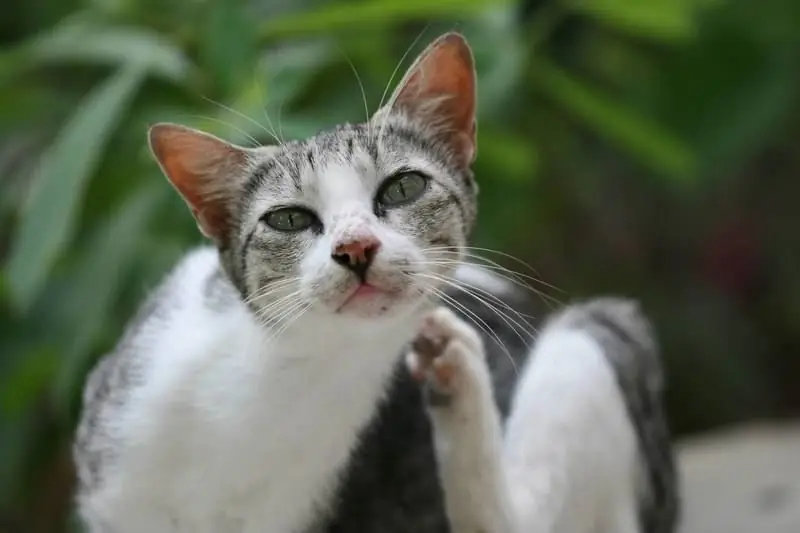
Description of the causative agent of otodectosis, how the infection occurs, the symptoms of the disease. How to diagnose and treat otodectosis. Preventive measures
Leukemia (viral Leukemia) In Cats: Causes, Main Symptoms Of The Disease, Treatment And Prognosis Of Survival, Recommendations Of Veterinarians
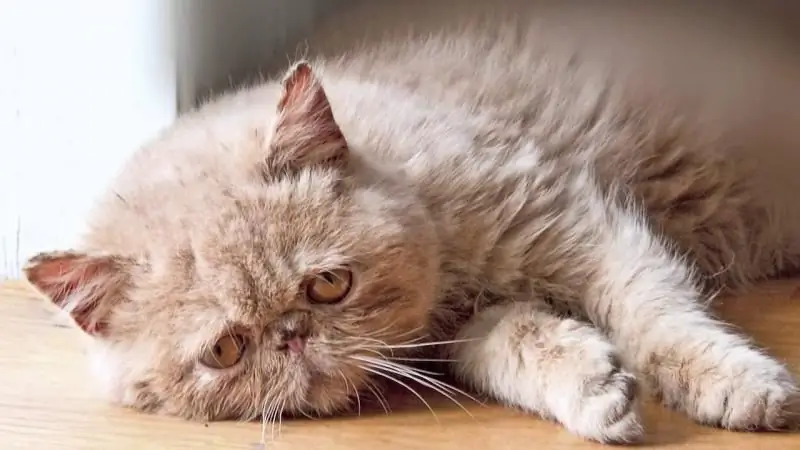
Causes of viral leukemia in cats Infection routes. How does the disease manifest? Diagnostics and treatment. Forecast. Preventive measures. Veterinarian recommendations
Renal Failure In Cats And Cats: Symptoms, Treatment, How To Save A Kitten And An Adult Animal (recommendations Of Veterinarians)
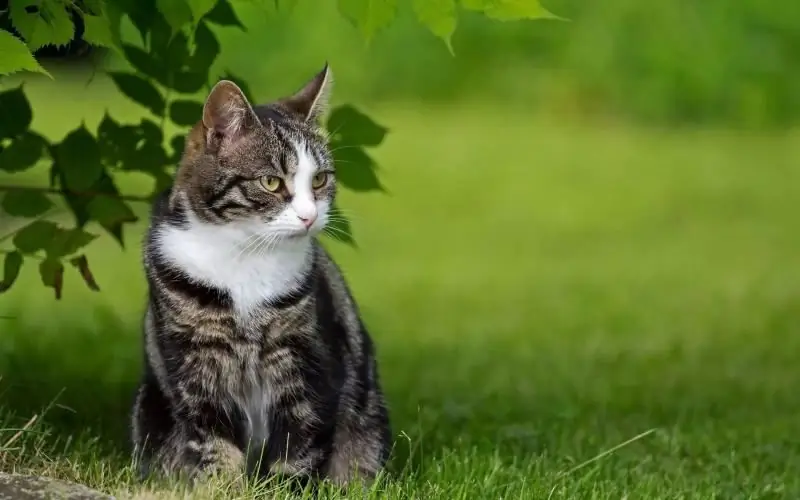
Types of renal failure in cats The reasons for its development. How pathology manifests itself and is diagnosed. Inpatient and home treatment. Prevention
Epilepsy In Cats: Symptoms Of The Disease, How To Stop Seizures, Can Seizures Be Prevented, Treatment Methods, Veterinarian Recommendations

What is epilepsy. Causes of the disease, forms and manifestations. Features of diagnostics. Treatment methods: medication, diet. Care rules. Prevention
Eosinophilic Granuloma In Cats: Symptoms And Treatment At Home, Prevention And Recommendations Of Veterinarians
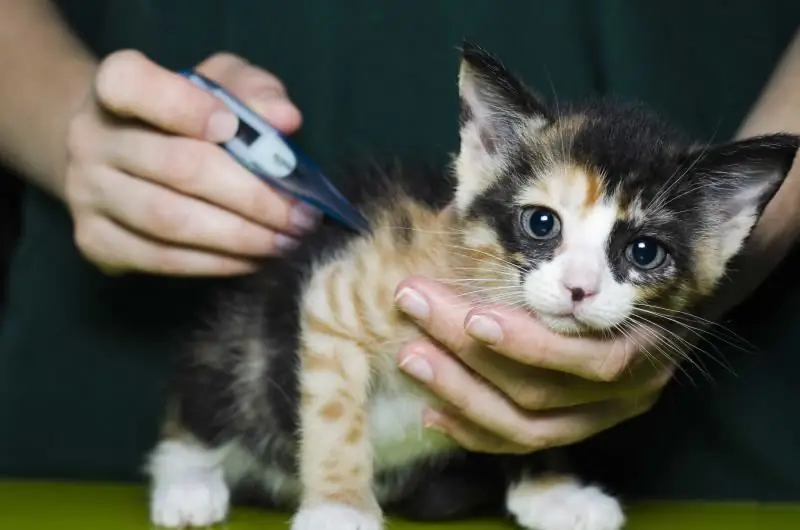
How does eosinophilic granuloma of cats look and proceed? Causes, diagnosis, prevention and treatment methods. Veterinarian recommendations
